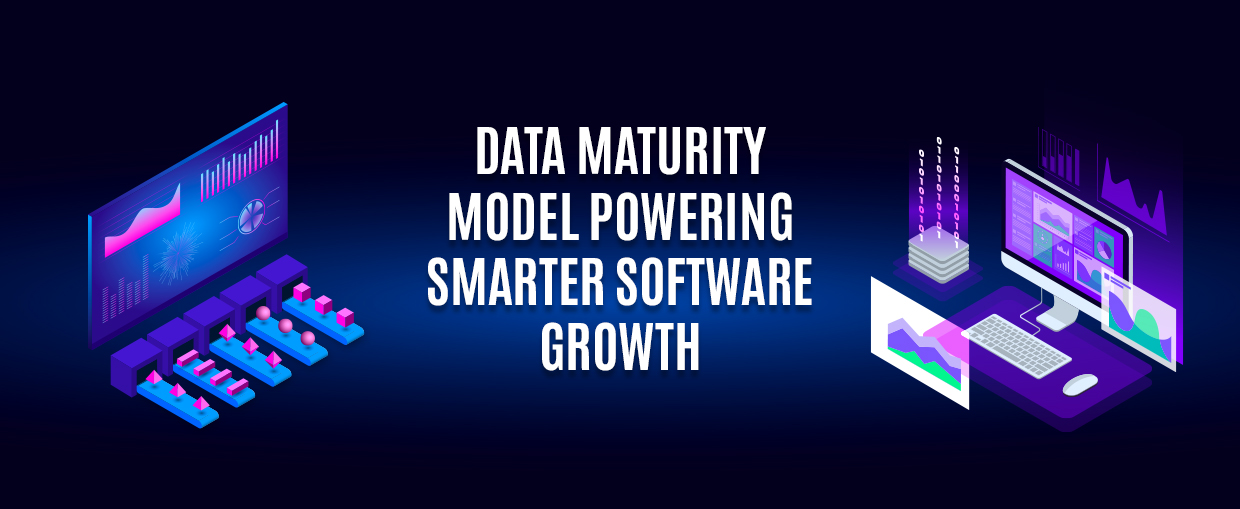In today’s fast-paced digital world, businesses must learn to use data strategically rather than simply collect it. Without structure, organisations risk creating data silos, inconsistencies, and missed opportunities. The key lies in turning raw data into actionable insights, and that’s where the Data Maturity Model comes in.
A Data Maturity Model helps organisations assess their current data management practices, identify gaps, and move towards becoming truly data-driven. For a business, whether a global enterprise or a growing software development company, understanding and applying this model can lead to better decisions, competitive advantage, and sustainable growth.
What is the Data Maturity Model?
The Data Maturity Model measures how effectively an organisation manages and uses data. At its highest level, all stakeholders can access, understand, and apply both quantitative and qualitative data to make informed decisions.
Instead of relying on chance or slow, organic improvements, the model provides a structured roadmap for progressing from basic data storage to advanced predictive analytics. This enables better decision-making, stronger governance, and efficient use of resources – something every forward-thinking software testing company in Canada can benefit from.
Benefits of Implementing a Data Maturity Model
- Improved Decision-Making
High-quality, reliable data ensures managers and teams can act with confidence. - Competitive Advantage
Well-structured data practices help businesses respond faster to market changes. - Operational Efficiency
Eliminates duplication, reduces errors, and ensures better collaboration. - Automation and Integration
Allows seamless adoption of AI tools and analytics into daily workflows.
Core Components of a Data Maturity Model
The core components of a Data Maturity Model ensure that data is managed, secure, and valuable. It includes multiple data related services that can be game-changers.
Data governance sets roles, responsibilities, and policies to maintain compliance and quality. Data quality focuses on cleansing, validating, and keeping information reliable. Data architecture provides efficient storage, integration, and access to data. Data security and privacy protect against breaches and ensure regulatory compliance. Data analytics and insights turn raw information into clear, actionable results.
An organisational data culture promotes literacy and collaboration across teams. Technology and tools enable scalable and flexible data integration and analysis. Performance measurement uses KPIs to track progress and maintain effectiveness.
The 5 Stages of the Data Maturity Model
- Initial (Ad Hoc)
Data is unstructured, siloed, and rarely used for informed decision-making. - Repeatable
Basic tools and processes are in place, but inconsistencies remain. - Defined
Governance frameworks and standardised processes guide data management. - Managed
Data is integrated, quality-checked, and leveraged for advanced analytics. - Optimised
AI, machine learning, and predictive analytics drive innovation and growth.
The Role of AI in the Data Maturity Model
The Role of AI in the Data Maturity Model is to support progress at every stage. In governance, AI automates data validation, cleaning, and standardisation. For basic analytics, it generates quick and accurate reports to aid decision-making. At the integration stage, AI merges structured and unstructured data into one trusted source. In advanced analytics, it provides predictive and prescriptive insights for faster responses. Through continuous improvement, AI learns over time to refine data processes and prevent regression.
Challenges in Achieving Data Maturity
Despite its benefits, many organisations struggle to reach higher maturity levels. Common barriers include unclear strategies, poor-quality data, outdated tools, and cultural resistance. For companies in tech sectors ranging from software development services to firms offering qa consulting services providers/software quality assurance services, overcoming these challenges is essential for long-term competitiveness.
Final Thoughts
Reaching the optimised stage of the Data Maturity Model is a cultural and strategic milestone. High data maturity enables better decisions, improved efficiency, and a stronger competitive position.
By partnering with experienced hands, you can transform your data practices, improve operational outcomes, and fully leverage your data assets for future growth.









